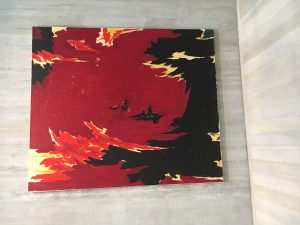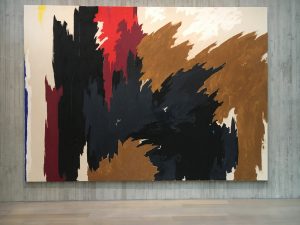

Over the past two blocks, our class has been in and out of the Colorado Springs Fine Arts Center putting together an exhibit. We became familiar with the museum and each section that we saw has art from various artists ranging from different time periods. It was exciting to take our knowledge from our own art museum and bring it to the Denver Art Museum and the Clyfford Still Museum from our field trip this week. The Denver Art Museum felt like a similar format to the Fine Arts Center. We viewed the special collections they had on display with artwork ranging from Rembrandt’s etchings to sculptures of Ganesha. We saw impressive art pieces in different mediums and in diverse styles. It was intriguing to compare these exhibitions with the collection we found in the next building over. This museum displays solely works painted by Clyfford Still, an abstract expressionist from the mid-twentieth century. Clyfford Still requested, in his will, that all his works go to one US city. Eventually, Denver was chosen as that city and the museum received ninety-five percent of Still’s works. The museum building itself was interesting to experience. The architects who designed the museum knew that only Still’s works would be displayed there, so the interior and exterior were built to accommodate his style and type of art. The walls were made of textured concrete to reflect the verticality seen in Still’s paintings. The ceilings had oval cutouts to let in Denver’s natural light. The lower floor is created to be bathed in less light than the upper one, because the second-floor displays Still’s works, while the first floor is for storage of works not currently on display and research. One advantage to having ninety-five percent of an artist’s works in a museum is that you are able to observe the artist’s style progress over time. On our tour, we saw how Still started off painting realistic portraits and landscapes, then focused on depicting the human form, and from there, produced works that were more and more abstract until there were no longer recognizable forms (as seen in the pictures below). Overall both the Clyfford Still and the Denver Art Museum were wonderful examples of experiencing in person what we had learned in class and had experienced at the Fine Arts Center Museum at CC.